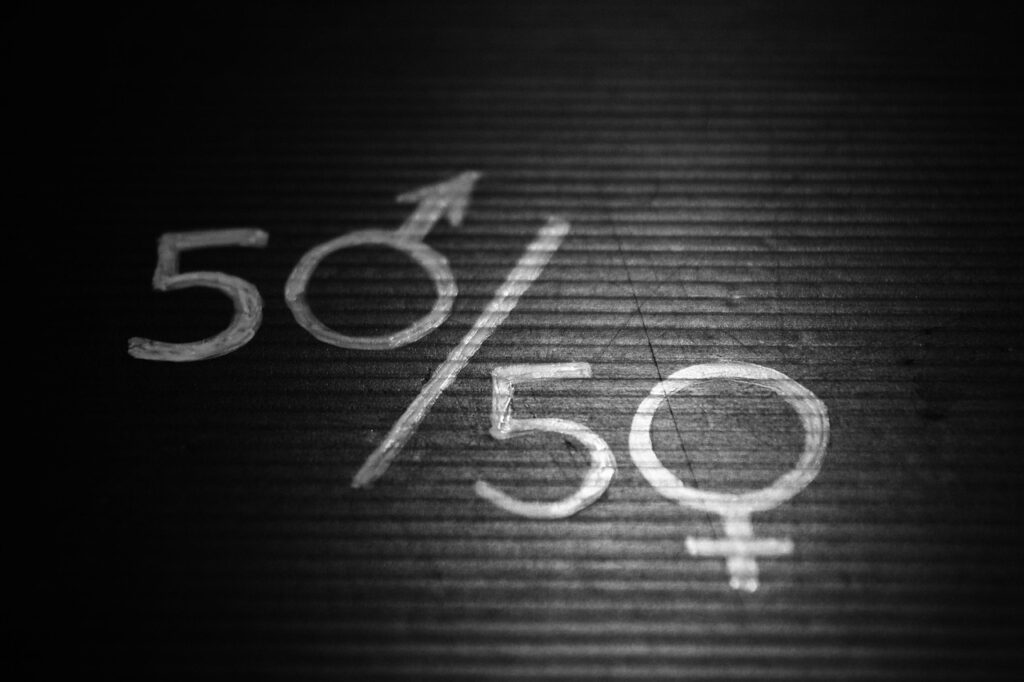Published on: 29th October 2024
Authored by: Divyanshi Shukla
United University
INTRODUCTION:
Marriage laws in India are differing and multifaceted, molded by the country’s wealthy social and religious legacy. Each major religion has its set of laws overseeing marriage, counting the Hindu Marriage Act, Muslim Personal Law, Christian Marriage Act, and Parsi Marriage Act. For those looking for a common or interfaith union, the Special Marriage Act gives a respectful system for marriage. Whereas these laws cater to the special traditions of each community, they too maintain common standards such as the forbiddance of child marriage and the necessity of legitimate age. In India Marriage is considered to be core of religion due to diversity in India marriage govern by personal laws there is no specific statues or act defined by government. Let’s discuss these in details.
HINDU MARRIAGE ACT 1955:
The Hindu Marriage Act, 1955 is a key enactment in Indian family law that oversees relational unions among Hindus. Sanctioned as portion of an arrangement of lawful changes pointed at modernizing India’s individual laws, the Act codified and standardized marriage inside Hindu society. Earlier to its sanctioning, Hindu relational unions were administered by differing traditions and conventions that changed over locales and communities. The Hindu Marriage Act looked for to make a uniform lawful system whereas protecting basic perspectives of Hindu customs. This Act characterizes the conditions for a substantial Hindu marriage, counting assent, age prerequisites, and denials against polygamy. It moreover lays down arrangements for separate, legal division, and upkeep, advertising legitimate response in cases of conjugal debate. The Act moreover emphasizes sex correspondence by permitting both life partners the right to record for separate and claim maintenance.
Applicability of the Hindu Marriage Act, 1955:
Hindus by Religion: It applies to anybody who is a Hindu, Jain, Buddhist, or Sikh by religion.It moreover covers those who are not individuals of other recognized religions (such as Islam, Christianity, Judaism, or Zoroastrianism) but are Hindus by custom.
Non-Hindus Changed over to Hinduism: Individuals who have changed over to Hinduism, Jainism, Buddhism, or Sikhism are moreover represented by the arrangements of the Act.
Territorial Jurisdiction: The Act applies to Hindus dwelling inside India and to Indian Hindus dwelling overseas if their marriage was solemnized beneath Hindu law.
Exceptions: The Act does not apply to certain Planned Tribes as indicated by the government, where standard laws proceed to oversee marriage. In rundown, the Hindu Marriage Act, 1955, is a comprehensive legitimate system that directs marriage, separate, and related viewpoints for Hindus in India, guaranteeing consistency whereas regarding conventional values.
The Hindu Marriage Act, 1955, is divided into 30 areas, and it comprehensively diagrams the rules, conditions, and legitimate strategies with respect to marriage, separate, and related things. Here’s a clarification of key segments that particularly conversation approximately marriage:
1) Section 5: Conditions for a Hindu Marriage: This segment traces the fundamental conditions for a substantial Hindu marriage.
It states: Neither party ought to have a living companion at the time of marriage (i.e., no bigamy). The parties must not be inside the degrees of precluded connections unless the traditions overseeing them permit such a marriage. The bridegroom must be at slightest 21 a long time ancient, and the bride must be at slightest 18. The parties ought to be of sound intellect, competent of giving substantial assent, and not enduring from any mental issue that makes them unfit for marriage or procreation. [1]
2) Section 6: Guardianship in Marriage (Repealed): This segment initially managed with the guardianship required in relational unions of minors, but it was revoked by the Child Marriage Restriction (Revision) Act, 1978, since marriage of minors was prohibited.
3) Section 7: Ceremonies for a Hindu Marriage: This segment recognizes that a Hindu marriage must be solemnized agreeing to the standard customs and ceremonies of either party. It emphasizes the significance of devout traditions and rituals. The ceremony more often than not incorporates the Saptapadi (seven steps around the sacrosanct fire), which is considered a official step for the marriage.
4) Section 8: Registration of Hindu Marriages: This section energizes the registration of relational unions. In any case, the nonattendance of enrollment does not consider the marriage. Each state may make rules and frameworks for registration.
5)Section 9: Restitution of conjugal rights: If one companion pulls back from the society of the other without sensible cause, the influenced companion can record a appeal for the compensation of matrimonial rights. If the court is fulfilled, it may pass a declare requesting the companion to return.
6)Section 10: Legal Separation: Either life partner can record for legal division on grounds comparative to separate. Whereas isolated, the parties are not bound to cohabit, but they stay lawfully married.
7) Section 11: Void Marriage: This section announces certain relational unions invalid and void if the conditions indicated in Section 5 are not met.
For example: Bigamous relational unions (marriage whereas one companion is as of now married). Marriages inside denied degrees of connections without lawful exception.
8) Section 12 Voidable Marriage: Certain relational unions are voidable, meaning they can be invalidated at the ask of one of the parties.
Grounds for voidable relational unions include: Non-consummation due to the feebleness of a party. Marriage solemnized without substantial assent (e.g., if gotten by extortion or force). If one party was rationally unfit at the time of marriage and many more.
Shashi Bala v. Rajiv Arora, (2013) 2 SCC 223.
The Supreme Court held that a request for compensation of marital rights ought to as it were be allowed if there is no sensible pardon for living independently. The Court clarified that the decree of restitution of conjugal rights ought to not be utilized as a device of Harassment.
Shiv Kumar Yadav v. Poonam Yadav, AIR 1997 SC 3792.
The Supreme Court held that Cruelty can be both physical and mental, and mental remorselessness must be evaluated in agreement with the conduct of the parties and their relationship. The Court allowed separate on the ground of mental cruelty.
Impact: The case made a difference in growing the definition of “Cruelty ” beneath the Hindu Marriage Act, 1955, to incorporate mental Cruelty as well.
MUSLIM MARRIAGE LAWS:
Muslim law (Islamic law or Sharia) has particular arrangements with respect to marriage, too referred to as Nikah. Here are the key viewpoints related to marriage beneath Muslim law:
- Definition of Nikah: Nikah is considered a contract between a man and a lady to legalize cohabitation and set up common rights and duties. It is a gracious contract with devout connotations, but it does not have a hallowed nature as in a few other religions.
- Fundamentals of a Substantial Muslim Marriage (Nikah)Proposal and Acknowledgment: There must be a clear proposition (Ijab) from one party and an acknowledgment (Qubool) by the other amid the same meeting.
- Free Assent: Both parties must assent to the marriage. Restraint or undue impact can [2]negate the marriage.
- Competency: Both parties must be of sound intellect and have accomplished adolescence. Adolescence is assumed to be around the age of 15, but it can change depending on the school of law. Minors can wed with the assent of their gatekeepers, but they can deny the marriage upon coming to adolescence beneath certain conditions (alternative of adolescence or Khiyar-ul-bulugh).
- Witnesses: Sunni law requires at slightest two male witnesses or one male and two female witnesses for the marriage to be substantial. Shia law does not essentially require witnesses.
- Mahr (Dower): This is a obligatory blessing from the spouse to the spouse as portion of the marriage contract, either indicated at the time of marriage or suggested. Mahr is the wife’s elite property.
- Types of Marriage
- (Sahih) Marriage: Fulfills all legal requirements and confers full rights on the spouses.
- Irregular (Fasid) Marriage: Lacks some formal requirements, like proper witnesses, but can be regularized upon correction.
- Void (Batil) Marriage: Such a marriage is considered invalid from the beginning and confers no rights or duties on the parties.
- Polygamy: Muslim law licenses a man to wed up to four spouses at the same time, given he treats them similarly in terms of support and equity. In any case, a few nations have forced legitimate confinements on polygamy.
- Marriage with Individuals of Other Faiths: Sunni law permits a Muslim man to wed a Christian or Jewish lady (individuals of the book), but a Muslim lady cannot wed a non-Muslim man unless he changes over to Islam.
Shia law for the most part requires both parties to be Muslims for the marriage to be substantial.
Khatoon Nisa v. State of UP, AIR 1984 All 400.
Allahabad High Court In this case dealt with the issue of a Muslim marriage without proper witnesses.
Holding: The Court held that under Sunni law, a marriage without witnesses is irregular (Fasid), but not void (Batil), and could be rectified by proper procedures.
Shayara Bano v. Union of India, (2017) 9 SCC 1.
Supreme Court of India in Shayara Bano challenged the practice of instant triple talaq (Talaq-e-Biddat), where a Muslim man could divorce his wife by pronouncing talaq three times in one sitting.
Holding: The Supreme Court declared the practice unconstitutional, citing its arbitrariness and violation of Muslim women’s fundamental rights.
Impact: This case led to the Muslim Women (Protection of Rights on Marriage) Act, 2019, which criminalized instant triple talaq.
SPECIAL MARRIAGE ACT 1954
The Special Marriage Act, 1954 is a mainstream law in India that gives for respectful marriage between people of diverse religions, or indeed those of the same religion, who wish to wed without taking after their individual laws. Here are the key arrangements related to marriage beneath the Special Marriage Act:
- Qualification for Marriage Age: The male must be at slightest 21 a long time ancient, and the female must be at slightest 18 a long time old.
- Monogamy: Not one or the other party ought to have a living companion at the time of marriage.[3]
- Mental Capacity: Both parties must be of sound intellect, able of giving substantial assent to the marriage.
- Prohibited Degrees of Relationship: The parties ought to not drop inside denied degrees of relationship, unless the traditions overseeing at slightest one of them allow such a marriage.
- Take notice of Intended Marriage (Section – 5): Parties expects to wed must deliver a composed take note to the Marriage Officer in the locale where at slightest one of them has dwelled for at slightest 30 days instantly going before the date of notice.
- Publications of notice (Section 6): Upon accepting the take note, the Marriage Officer will distribute it in a noticeable put in his office for 30 days, amid which complaints to the marriage can be raised.
- Objection to Marriage (Section 7): Any individual can question to the marriage inside 30 days of the take note, but the protest must be based on a substantial lawful ground beneath the Uncommon Marriage Act.
- Solemnization of Marriage (Section 12): If no substantial protests are raised, or if they are settled, the marriage can be solemnized after 30 days but some time recently 90 days from the date of the take note. The marriage can be solemnized in the nearness of the Marriage Officer and three witnesses.
- Registration of Marriage (Section 13): After the marriage is solemnized, a certificate of marriage is issued by the Marriage Officer, and this certificate is conclusive confirmation of the marriage.
- Conditions for a Substantial Marriage (Section 4): Traces conditions beneath which a marriage is considered valid:
- Both parties must not be unable of giving substantial assent due to unsoundness of mind.
- Neither party ought to endure from mental clutters to such a degree that they are unfit for marriage or procreation.
- The parties must not have been subject to repetitive assaults of madness or epilepsy.
- Impact of Marriage (Section 19): Marriage beneath the Extraordinary Marriage Act does not influence the rights, inabilities, or capacities of either party concerning their individual law but in things of progression, where the Indian Progression Act, 1925 will apply, unless both parties are Hindus, Sikhs, Buddhists, or Jains (in which case Hindu Progression law will apply).
Sarla Mudgal v. Union of India, AIR 1995 SC 1531.
The Supreme Court of India in this case managed with the issue of a Hindu man changing over to Islam to solemnize a moment marriage without separating his to begin with spouse. The solicitor contended that this hone abuses the rights of the to begin with wife.
Judgment: The Incomparable Court held that an individual cannot elude their commitments beneath the to begin with marriage by changing over to another religion. The Court ruled that changing over to Islam and wedding a moment time without dissolving the to begin with marriage beneath the Hindu Marriage Act sums to plural marriage, which is culpable beneath Segment 494 of the Indian Corrective Code (IPC).
Impact: This case emphasized that people cannot utilize devout transformation as a implies to outwit their commitments beneath the Extraordinary Marriage Act or any individual laws they are subject to.
Lily Thomas v. Union of India, AIR 2000 SC 1650
The Supreme Court of India in this case tended to the issue of men changing over to Islam exclusively for the reason of solemnizing a moment marriage, which they would not be able to do beneath their unique individual law.
Judgment: The Preeminent Court reaffirmed the choice in Sarla Mudgal v. Union of India, expressing that transformation to Islam does not break up a past marriage beneath a diverse individual law, and remarrying without appropriate disintegration sums to bigamy.
Impact: This judgment emphasized that change to another religion cannot be utilized to elude the legitimate obligations beneath the Special Marriage Act or any other individual law.
CONCLUSION:
In conclusion, marriage laws in India reflect the country’s pluralistic society, with distinctive individual laws administering relational unions based on religion, whereas the Special Marriage Act, 1954 offers a common elective for interfaith or non-religious relational unions. In spite of the fact that individual laws regard devout independence, they frequently lead to irregularities, particularly in terms of sex balance. The legal has played a significant part in progressing women’s rights and advancing decency, but calls for a Uniform Civil Code proceed to highlight the continuous talk about between devout flexibility and lawful consistency.
References:
[1] https://egyankosh.ac.in/bitstream/123456789/17331/1/Unit-16.pdf
[2]https://www.indiacode.nic.in/bitstream/123456789/5615/1/muslim_marriages_registration_act%2C_1981.pdf
[3] https://blog.ipleaders.in/special-marriage-act/




